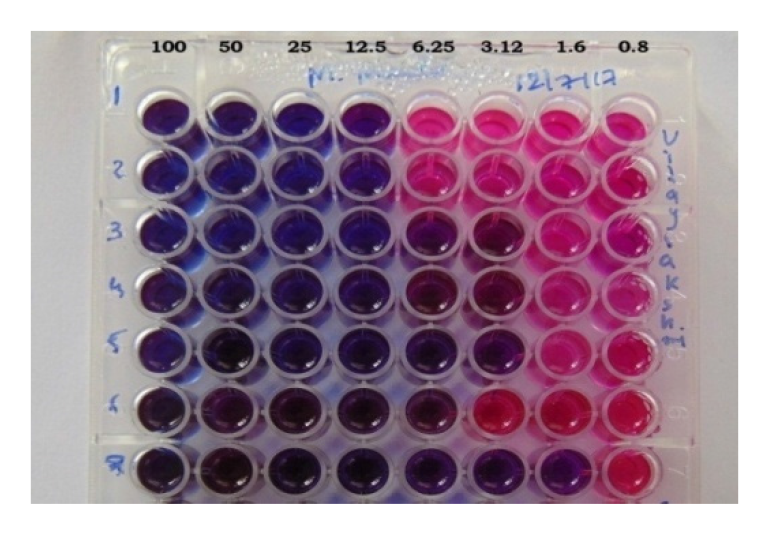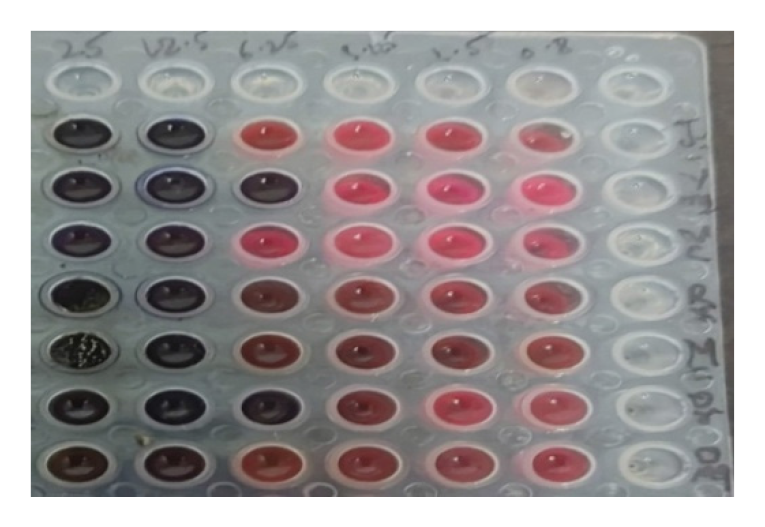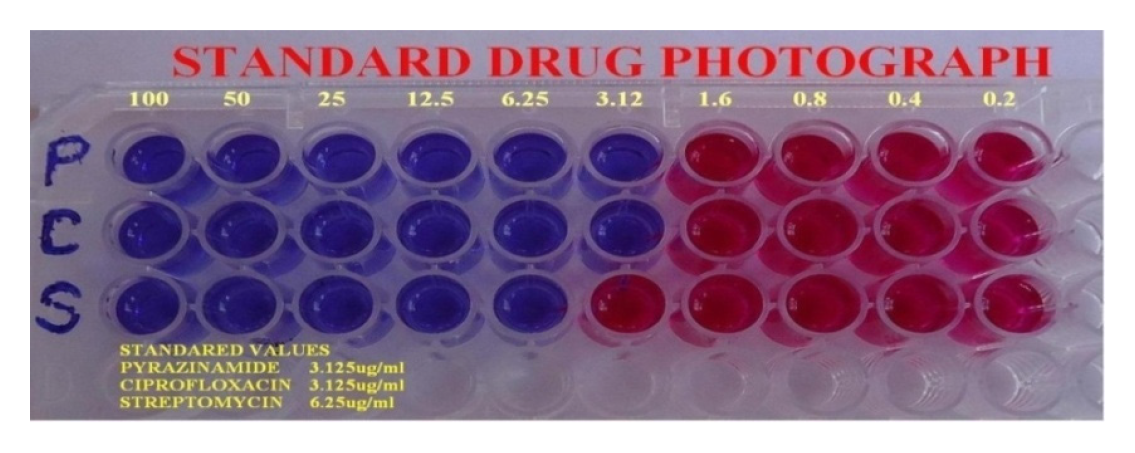ABSTRACT
INTRODUCTION
Chemical communication is the process in which one organism (Animal or plant) may communicate with other organism of same or different species through chemical signals, called as semiochemicals. These chemical signals are volatile in nature produce from outside of body and release into environment. Basically, these are of two types – Pheromones and Allochemicals. Pheromones –involves in communication between members of the same species, Where as Allochemicals – to communicate different species. Pheromones have the power to alter a recipient’s behavior and can be used for mating, alarming, attracting, recognising, and trail-following. Not only that, but some plant pheromones also involved in self-defense.1–3 Terpenoids are potent molecules ment for chemical communication as pheromones and produced as a part of defense system to fight with biotic and abiotic stress. Pheromones can contain significant or moderate amounts of essential oil (Mono and Sesqui terpenes) components. These are useful against both pathogenic and non-pathogenic disorders and have pharmacological properties such as anti-inflammatory, antioxidant, antidiabetic, anticarcinogenic, and cardiovascular protective activity.4,5
There is need for discovery of novel antitubercular agents to manage drug resistance problem. We used Terpenoids to obtain Mechanism of action to treat Tuberculosis, as many of terpenes are known to posses unique Mechanism of action. India is represented by rich culture, traditions and natural biodiversity. In terms of herbal medicines, India is a world leader and providing knowledge to researchers in searching novel drug molecules. In this regard we selected some Flowers, aromatic Plants and umbelliferous seeds containing volatile oils to act against Tuberculosis.6,7 In the present work, we collected essential oils are from flowers which are used in pooja like Mari gold (Orange and yellow), French marigold Chrysanthemum (White, Yellow, Maroon and Purple) and Jasmine (J. officinalis and J. multiflouram), Roses (Pink, red and orange), Night jasmine (parijata), umbelliferous fruits like Fennel, Cumin, Caraway and aromatic plants like Mint, Coriander and Sweet Marjoram, tested for their activity against bacteria, fungal and Tuberculosis and reported it.
MATERIALS AND METHODS
Collection of flowers and extraction
All the flowers, aromatic plants and umbelliferous seeds are collected freshly from surroundings of Guntur, A.P., India. The collected material was cleaned and allowed for maceration in Diethyl ether for 2 days at 20°C. The extract was collected by squeezing the macerated material. The solvent was removed by drying at below 20°C and properly stored till further use.
Antibacterial activity
The antibacterial activity was evaluated by Cup-plate agar diffusion method. The petridish with solidified medium was divided in to 3 portions and with the help of borer made the bores having diameter 8mm. 10μl of test and standard (Streptomycin) having the conc. 100 μg/mL were poured into bores. To get uniform distribution of drugs, plates were allowed to stand for 2hr by keeping them into refrigerator, after that allow these plates for incubation for one day at 37°C. Zone of inhibition was measured.
Antifungal activity
Antifungal activity was evaluated by Cup-plate agar diffusion method, by following same procedure by using the Aspergillus as organism and Ketoconazole is the standard. All the Petri plates were incubated for 48hr at 37°C and Zone of inhibition was measured.
Antitubercular activity using Microplate Alamar Blue assay (MABA) method
Using a Microplate Alamar Blue test, compounds’ anti-mycobacterial activity was evaluated against M. tuberculosis (H37 RV strain) (MABA). This method has good agreement with the proportional and BACTEC radiometric methods, is non-toxic, and makes use of a thermally stable reagent. Into a sterile 96 wells plate 0.2ml of sterile deionized water, 100 μl of the Middle brook 7H9 broth was taken. To this mixture a serial dilutions of test compounds having the concentration range from 0.2 to100 μg/ ml were added. The plate was sealed with parafilm and incubated for 5 days at 37°C. A mixture (1:1) of 10% Tween 80 and Almar Blue reagent was added and again incubate it for 24 hrs. Color change from pink to blue is the measure of activity and MIC is the parameter. The anti T. B activity of sample essential oils and the standards are represented in Figures 1, 2 and 3 respectively.

Figure 1.
Anti-tubercular activity of essential oils.

Figure 2.
Anti-tubercular activity of essential oils.

Figure 3.
Anti-tubercular activity of stand. drugs like Pyrizinamide, Ciprofloxacin and Streptomycin.
RESULTS
In the present work we evaluated the antibacterial, antifungal and antitubercular activity by in vitro method, which are safe and less expensive. The results were represented in Table 1. For antibacterial and antifungal activities zone of inhibitions were calculated and for antitubercular activity MIC’S were represented.
| Sl. No | Sample (100 μg/ml) | Antibacterial activity | Antifungal activity | Antitubercular activity |
|---|---|---|---|---|
| Zone of inhibition ( cms) | Zone of inhibition (cms) | MIC (Conc. in μg/ml) | ||
| 1 | MGY | 1.4 | 0.9 | 12.5 |
| 2 | MGO | 1.2 | 1.4 | 12.5 |
| 3 | KBY | 1.6 | 1.6 | 6.25 |
| 4 | CYY | 1.8 | 0.9 | 12.5 |
| 5 | CYW | 2.2 | 1 | 6.25 |
| 6 | CYM | 1.7 | 0.9 | 6.25 |
| 7 | CYP | 1.3 | 0.9 | 3.12 |
| 8 | JAO | 1.2 | 1.2 | 6.25 |
| 9 | JAM | 1.5 | 1.5 | 6.25 |
| 10 | NFP | 1.2 | 1 | 3.12 |
| 11 | NFS | 1.8 | 1.8 | 1.6 |
| 12 | R.rose | 1.2 | 1.1 | 12.5 |
| 13 | O.rose | 1.4 | 1.8 | 6.25 |
| 14 | P. rose | 1.5 | 0.9 | 6.25 |
| Aromatic plants | ||||
| 15 | OMM | 1.7 | 1.2 | 12.5 |
| 16 | CSP | 1.2 | 0.9 | 12.5 |
| 17 | MAP | 1.6 | 1.6 | 12.5 |
| Umbelliferous seeds | ||||
| 18 | CSS | 1.0 | 0.9 | 6.25 |
| 19 | CCZ | 1.1 | 1.4 | 12.5 |
| 20 | FVF | 1.0 | 2.4 | 3.12 |
| 21 | CCL | 1.0 | 1.2 | 6.25 |
| 22 | Standard | 2.4 (Streptomycin) | 1.5 (Ketoconazole) | Pyr- 3.12, Cip-3.12 Str-3.12. |
DISCUSSION
The duration and complexity in treatment leads to non-adherence, Adverse events, XDR and MDR, Co-infection of T.B with HIV, Identification and treatment of Latent TB persons, DOTS program which is labor-intensive and expensive are factors making the treatment and complete elimination of Tuberculosis very difficult. We got an opportunity to do research on plant products which are used in the treatment of Tuberculosis.6 The Aromatic plants belonging to Amaryllidaceae, Apiaceae, Asparagaceae, Asteraceae, Leguminosae, Rutaceae and Solanaceae are having antitubercular activity because of the presence of essential oils.
The samples of essential oils from flowers, seeds and aromatic plants have shown good results. The essential oils of flowers shown good antibacterial activity, particularly Chrysanthemum morifolium (White) have shown potent activity, whose zone of inhibition is 20mm when comparing with standard. These essential oils have shown less effect on fungi except oils of Nycanthus, whose zone of inhibition was 18mm, which is more than that of standard (15mm). The essential oils of aromatic plants shown good antibacterial and antifungal activity, when comparing with standard these are less significant. The essential oils of Umbelliferous seeds have shown good antibacterial and antifungal activity, when comparing with standard these is less significant. Coming to the antitubercular activity, the essential oils of flowers showed good antitubercular activity, than that of aromatic plants and seeds. Particularly oil from Nycanthus is more potent than the standards like Pyrizinamide, Ciprofloxacin and streptomycin, whose MIC is 1.6μg/mL. Oil from Chrysanthemum morifolium (Maroon) have shown activity equal to that of standard i.e., 3.25μg/mL. Remaining other flower oils showed their activity at 6.25μg/mL. The essential oils of aromatic plants showed their activities at 12.5μg/mL, when comparing with standard these are less significant. The essential oils of Umbelliferous seeds showed good activity and the MIC of fennel was 3.125μg/mL which is equal to that of standard. MIC of Coriander and Clove was 6.25μg/mL and MIC of Zeera was 12.5μg/mL, when comparing with standard these is less significant.
So, when comparing the antifungal and antibacterial activities of these essential oils, they shown more specificity towards Mycobacterium tuberculosis. This was proven by the Concentration of samples used for the evaluation, 100μg/mL in case of both antifungal and antibacterial activities and where as MIC-1.6 μg/ ml for antitubercular activity, which is less than that of standard.
CONCLUSION
From this study we are concluding that the essential oils very unique in nature and has several uses in our day-to-day life. The selected flowers in using as a part our tradition (like festivals, as ornamental and decorative) and umbelliferous seeds and aromatic plants like Mint using in daily life are having potent antitubercular activity and playing an important role in maintaining our environment hygiene and making us healthy.
Cite this article
Nandikatti V, Nagasree KP, Kumar MMK. Antitubercular Activity of Essential Oils Extracted from Some Aromatic Plants, Flowers and Seeds. J Young Pharm. 2023;15(2):380-3.
CONFLICT OF INTEREST
The authors declare that there is no conflict of interest.
References
- Kost C. Chemical Communication. T Book of Ency of Ecoy. 2008:557-75. [Google Scholar]
- Blande JD, Glinwood R. Deciphering chemical language of plant. Comn signaling A Comn in plants (e-book). :238-9. [Google Scholar]
- Marmolejo LO, Thompson MN, Helms AM. Defense suppression through interplant communication depends on the attacking herbivore species. J Chem Ecol. 2021;47(12):1049-61. [PubMed] | [CrossRef] | [Google Scholar]
- Tholl D. Biosynthesis and biological functions of terpenoids in plants. Adv Biochem Eng Biotechnol. 2015:1-44. [PubMed] | [CrossRef] | [Google Scholar]
- Fokou JH, Dongmo PMJ, Boyom F. Towards A National Policy for Water Supply and Conservation. Nature. 1964;202(4927):1-3. [CrossRef] | [Google Scholar]
- Al-Humadi HW, Al-Saigh RJ, Al-Humadi AW. Addressing the Challenges of Tuberculosis: A Brief Historical Account. Front P col. 2017:1-10. [CrossRef] | [Google Scholar]
- Sherry E, Reynolds M, Sivananthan S, Mainawalala S, Warnke PH. Inhalational phytochemicals as possible treatment for pulmonary Tuberculosis: Two case reports. Am J Infect Control. 2004;32(6):369-70. [PubMed] | [CrossRef] | [Google Scholar]
